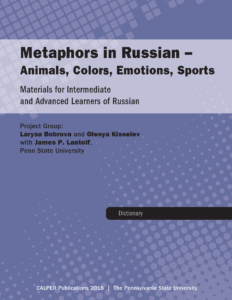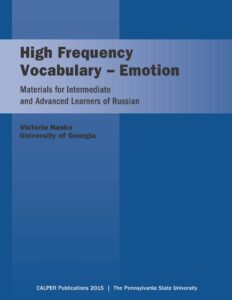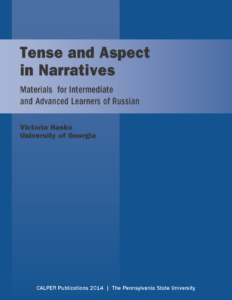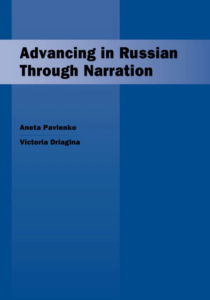Metaphors in Russian
Metaphors in Russian is part of the units developed in the project ‘Metaphoric Competence in the Foreign Language Classroom.”
The unit contains guided activities that help students first study metaphorical associations and explore how associations may differ cross-culturally. The students are introduced to some expressions connected with the respective metaphors and they learn about their meanings. Students will learn to identify, interpret, and produce metaphoric language in their L2.
Background information is available in:
Bobrova, L., & Lantolf, J. P. (2012). Metaphor and Pedagogy (CALPER Working Paper Series, No. 11). The Pennsylvania State University: Center for Advanced Language Proficiency Education and Research. Available as a free download on our site under “Publications“.

Publication Units:
Metaphors in Russian – Animals, Colors, Emotions, Sports
(1) Student Unit
(2) Dictionary
Publication Files:
High Frequency Vocabulary – Emotion
This unit ‘High Frequency Vocabulary – Emotion” by Victoria Hasko (University of Georgia) is part of a series of materials for intermediate and advanced learners of Russian developed by CALPER. The series focuses on areas of Russian language knowledge central to developing narrative proficiency, i.e. the ability to tell stories.

Publication Units:
High Frequency Emotion Vocabulary Items
Publication Files:
Tense and Aspect in Narratives
This unit on “Tense and Aspect in Narratives” by Victoria Hasko (University of Georgia) is part of a series of materials for intermediate and advanced learners of Russian developed by CALPER. The series focuses on areas of Russian language knowledge central to developing narrative proficiency, i.e. the ability to tell stories. An introduction to developing narrative proficiency has been published as “Advancing in Russian Through Narration” by Aneta Pavleno and Victoria Driagina (CALPER Publications, 2008).
Also available in this series are:
Motion Verbs in Narratives
High Frequency Vocabulary – Emotion

Motion Verbs in Narratives
This unit on “Motion Verbs in Narratives” by Victoria Hasko (University of Georgia) is part of a series of materials for intermediate and advanced learners of Russian developed by CALPER. The series focuses on areas of Russian language knowledge central to developing narrative proficiency, i.e. the ability to tell stories. An introduction to developing narrative proficiency has been published as “Advancing in Russian Through Narration” by Aneta Pavleno and Victoria Driagina (CALPER Publications 2008).
Other units in this series:
Tense and Aspect in Narratives
High Frequency Vocabulary – Emotion

Advancing in Russian Through Narration
Pavlenko, A., & Driagina, V. (2008). Advancing in Russian through narration. University Park, PA: CALPER Publications.
The focus of Advancing in Russian through Narration is on two important components of advanced foreign language proficiency, narrative and conceptual proficiency.
Narrative proficiency refers here to the ability to tell narratives that are similar to those of native speakers of Russian. Conceptual proficiency refers to the ability of making the same conceptual distinctions as native speakers of Russian do.
Our discussion singles out five areas of Russian language knowledge central to acquisition of narrative and conceptual proficiency. Two of these areas, namely the use of tense and aspect and the use of verbs of motion, are well-known in the field of Russian instruction as areas of particular difficulty for English-speaking students.The other three areas, namely narrative structure, emotion vocabulary, and identity vocabulary, have not been much discussed in the literature on teaching Russian, to the best of our knowledge. Thus, the first contribution of this book to the literature on teaching advanced Russian is in drawing attention to areas of difficulty ignored previously. The second contribution is in drawing attention to narrative and conceptual proficiency as important components of advanced level proficiency.
Chapters:
Narratives in the Russian Classroom
Emotion Vocabulary
Verbs of Motion
Tense and Aspect in Narratives
Identity Terms in Narratives
Appendix: The Research Study
